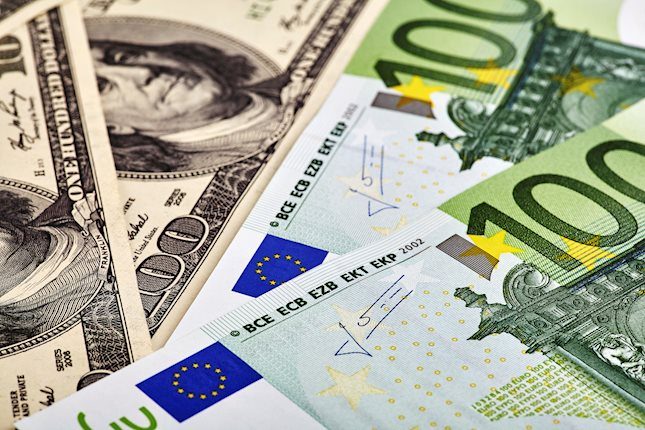Financial markets will be digesting political news at the start of this week. The shock French election result that saw the left-wing New Popular Alliance win the largest share of the vote has thrown the process of forming the next French government into chaos. There is now a hung parliament in France and there could be months of horse trading before a party can form a coalition and a prime minister is appointed. The euro was mildly lower at the start of this week, although EUR/USD is still above $1.0800, and Cac 40 futures point to a 0.3% decline when markets open later today.
The markets digested the much more clear-cut victory for the UK’s Labour party at the end of last week, and we could see some mild haven flows into UK equities and bonds on the back of the less stable French election result. However, with these two big elections out of the way, we expect the markets to focus on key economic data releases this week, the start of Q2 earnings season in the US and expectations for interest rate cuts.
US inflation crucial for Fed rate cut expectations
Key economic highlights this week include the US CPI for June, which is expected to decline to 3.1% on an annual basis, down from 3.3% in May. If inflation does fall to 3.1%, this would be the lowest reading since January, and would reinforce the deflationary trend that has led to growing expectations that the Federal Reserve will cut rates in September. If we see a softer than expected inflation reading for June price growth, then this could see the market boost their expectations for a September rate cut. The market is currently pricing in a 75% chance of a rate cut in September, up from a 60% chance a week ago. The unemployment rate edged up to 4.1% last month, the highest level since 2021 and some analysts are now expecting the unemployment rate to reach 4.5% by year end. An increase in initial and continuing jobless claims are also signs that the US labour market is softening. Together with weaker than expected inflation data this week, the signs are pointing towards a slowdown in the US economy, but not an outright contraction. Combined with growing expectations for an interest rate cut from the Federal Reserve in the coming months, this is fertile ground for stock market returns.
Tesla stocks shine
US stocks closed up 1.5% for the S&P 500, with the Nasdaq gaining 2.77% in the first week of July. Both indices closed at record highs, with big gains during the week for Tesla, up more than 27%, Paramount, up 15% on more takeover news with Skydance, Apple, and Adobe, both higher by more than 5%. Tesla’s share price is now in positive territory for the year, and it had its best weekly performance since June 2023. Its share price was boosted by better-than-expected delivery figures for Q2, along with some analysts calling Tesla an undervalued AI play, as investors wait for the Tesla Investor Day on 8th August, where Elon Musk is expected to announce the Robotaxi and plans for full driverless technology. Tesla is the worst performer out of the Magnificent 7 in the past year, however, it has picked up in the past month, and has outperformed the likes of Meta, Google, and Amazon. Thus, there could be further room for improvement in the Tesla share price, particularly if the ‘AI play’ catches the market’s imagination.
Elsewhere this week, the focus will also be on Federal Reserve chairman Jerome Powell’s testimony to the Senate and the House of Representatives, which will take place on Tuesday and Wednesday. Powell is likely to be pushed on the impact of inflation, and some Democrats could urge the Fed chair to cut rates sooner rather than later, to boost Biden’s fledgling election campaign. However, the Fed is not political, and they are unlikely to be swayed by politicians over the timing of rate cuts, instead the Fed will follow the economic data. As we move into the summer, the focus is on the timing of the Fed rate cut, rather than the turmoil surrounding President Biden’s reelection campaign.
UK: GDP focuses mind on UK growth potential
In the UK, monthly GDP will be released for May. This is expected to rise by 0.2% on the month, with the 3 month/ month rate rising by 0.7%, the same rate as April. This is a decent rate of GDP, however, any talk about the UK’s GDP rate will turn to the new Starmer government, who have pledged to boost the economy and make the UK more productive. The FTSE 100 closed the week higher; however, it was one of the weaker performers in the European stock market space. The FTSE 250, a more domestically focused index, outperformed the FTSE 100 last week. It rose by 2.5%, and the index is just over 100 points away from its high of 2024 so far. This suggests that the UK’s change of government has had a market impact. Likewise, the pound was the strongest currency in the G10 last week aside from the Aussie dollar. GBP/USD rose by 1.29% last week, in a sign that the pound could be about to stage a bigger recovery as it has momentum on its side, now that the UK’s political risk premium has been eradicated. The next key level is $1.30. Interestingly, the pound is rising, alongside expectations of a rate cut from the Bank of England next month, there is currently a 66% chance of a rate cut priced in by the OIS market.
Commodities: Gold gets a boost from rising rate cut expectations
Elsewhere, in the commodity space there were gains for WTI oil last week, which rose by 1.7% on the back of hurricanes in the Caribbean. As we head deeper into the summer driving season, WTI and Brent crude are comfortably above $80 per barrel. US gasoline prices also rose by 0.5% last week. Industrial metals also made strong gains last week, the copper price rose by 3.5%, iron ore rose by more than 5% and the price of silver surged by 7%. The gold price also rallied by 2.8% to $2,392 per ounce. The spot gold price is just under $35 from its record high, and there may be further upward pressure on the gold price this week if we see weaker inflation and a further boost to expectations of a US interest rate cut in September.
Earnings season: banks expected to get a boost from dealmaking
The second quarter earnings season also kicks off this week. Delta airlines will report results on Thursday. The market is expecting a 12% decline in earnings per share due to higher labour, fuel, and maintenance costs, even though revenues are expected to have risen. On Friday we get a spate of bank earnings including JP Morgan, Citi, and Wells Fargo. JP Morgan and Citi are expected to post strong earnings on the back of a return of dealmaking including M&A and IPOs. Equity trading is also expected to outperform fixed income, and net interest income may have shrunk across the US banking system as stubbornly high interest rates mean that banks are paying out on deposits. The S&P 500 banking sector has performed well in recent weeks, and the index is at its highest level since 2022. If we see a strong set of results on the back of the return of dealmaking, then the S&P 500 banking index could target the January 2022 high.
CFD’s, Options and Forex are leveraged products which can result in losses that exceed your initial deposit. These products may not be suitable for all investors and you should seek independent advice if necessary.
Recommended Content
Editors’ Picks

EUR/USD sits at yearly lows near 1.0550 ahead of EU GDP, US PPI data
EUR/USD is trading near 1.0550 in the European session on Thursday, sitting at the lowest level in a year. The Trump trades-driven relentless US Dollar buying and German political instability weigh on the pair. Traders await EU GDP data and US PPI report ahead of Fed Chair Powell's speech.

GBP/USD holds losses below 1.2700 on sustained US Dollar strength
GBP/USD is holding losses near multi-month lows below 1.2700 in European trading on Thursday. The pair remains vulnerable amid a broadly firmer US Dollar and softer risk tone even as BoE policymakers stick to a cautious stance on policy. Speeches from Powell and Bailey are eyed.

Gold price hits fresh two-month low as the post-election USD rally remains uninterrupted
Gold price drifts lower for the fifth consecutive day and drops to its lowest level since September 19, around the $2,554-2,553 region heading into the European session on Thursday. The commodity continues to be weighed down by an extension of the US Dollar's post-election rally to a fresh year-to-date.

XRP struggles near $0.7440, could still sustain rally after Robinhood listing
Ripple's XRP is trading near $0.6900, down nearly 3% on Wednesday, as declining open interest could extend its price correction. However, other on-chain metrics point to a long-term bullish setup.

Trump vs CPI
US CPI for October was exactly in line with expectations. The headline rate of CPI rose to 2.6% YoY from 2.4% YoY in September. The core rate remained steady at 3.3%. The detail of the report shows that the shelter index rose by 0.4% on the month, which accounted for 50% of the increase in all items on a monthly basis.

Best Forex Brokers with Low Spreads
VERIFIED Low spreads are crucial for reducing trading costs. Explore top Forex brokers offering competitive spreads and high leverage. Compare options for EUR/USD, GBP/USD, USD/JPY, and Gold.